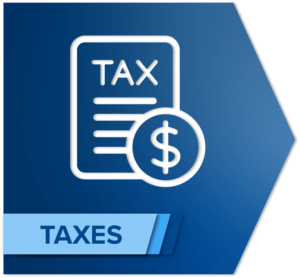
New PPP Loan Forgiveness FAQs
Article at a Glance:
- In consultation with Treasury, the SBA released guidance Tuesday, answering 23 frequently asked questions regarding the forgiveness of Paycheck Protection Program loans.
- This eTax alert focuses on one topic. What’s included in compensation for the owners of various entities?
- C Corporations
- S Corporations
- Self-employed Schedule C (or Schedule F) filers
- General Partners
- LLC Owners
SBA has issued more than 5 million PPP loans. We helped with lots of the loan applications, and soon we will be asked to help with the forgiveness applications —we have a lot of work to do because many of the 5 million borrowers are our clients.
New Forgiveness FAQs. CARES provided for loan forgiveness without many details. SBA and Treasury have worked at defining and explaining how PPP loan forgiveness will work when SBA begins accepting forgiveness applications on August 10, 2020. To help us, on August 4, 2020, the SBA released ten pages of FAQs on PPP loan forgiveness. There are many answers in the new FAQs. This e tax alert focuses on just one topic.
What’s included in compensation for the owners of various entities? FAQ 8 on pages 4, 5, and 6 (finally) answers, in determining PPP loan forgiveness, how the amount of owner compensation is calculated for the C Corporation owner-employee, the S Corporation owner-employee, the self- employed Schedule C (or F) owner and the general partner.
Note. The answers assume a covered period of 24 weeks. Thus, SBA uses 2.5/12 of 2019 numbers to make the calculations in the FAQs. Because $100,000 is the compensation limit, the FAQs use a maximum compensation amount of $20,833. If your client is using the 8- week covered period, the forgiveness calculation is made based on 8/52 of 2019 compensation with a limit of $15,385.
C Corporations
The employee cash compensation of a C-corporation owner-employee, defined as an owner who is also an employee (including where the owner is the only employee), is eligible for loan forgiveness up to the amount of 2.5/12 of his or her 2019 employee cash compensation, with cash compensation defined as it is for all other employees. Borrowers are also eligible for loan forgiveness for payments for employer state and local taxes paid by the borrowers and assessed on their compensation, for the amount paid by the borrower for employer contributions for their employee health insurance, and employer retirement contributions to their employee retirement plans capped at the amount of 2.5/12 of the 2019 employer retirement contribution. Payments other than for cash compensation should be included on lines 6-8 of PPP Schedule A of the loan forgiveness application (SBA Form 3508 or lender equivalent), for borrowers using that form, and do not count toward the $20,833 cap per individual.
S Corporations
The employee cash compensation of an S-corporation owner-employee, defined as an owner who is also an employee, is eligible for loan forgiveness up to the amount of 2.5/12 of their 2019 employee cash compensation. Borrowers are also eligible for loan forgiveness for payments for employer state and local taxes paid by the borrowers and assessed on their compensation, and for employer retirement contributions to their employee retirement plans capped at the amount of 2.5/12 of their 2019 employer retirement contribution.
Employer contributions for health insurance are not eligible for additional forgiveness for S-corporation employees with at least a 2% stake in the business, including for employees who are family members of at least 2% owner under the family attribution rules, because those contributions are included in cash compensation.
The eligible non-cash compensation payments should be included on lines 7 and 8 of PPP Schedule A of the Loan Forgiveness Application (SBA Form 3508), for borrowers using that form, and do not count toward the $20,833 cap per individual.
Self-employed Schedule C (or Schedule F) filers
The compensation of self-employed Schedule C (or Schedule F) individuals that is eligible for loan forgiveness is limited to 2.5/12 of 2019 net profit as reported on IRS Form 1040 Schedule C line 31 (or 2.5/12 of 2019 net farm profit, as reported on IRS Form 1040 Schedule F line 34).
Separate payments for health insurance, retirement, or state or local taxes are not eligible for additional loan forgiveness as health insurance, and retirement expenses are paid out of their net self-employment income.
If the borrower did not submit its 2019 IRS Form 1040 Schedule C (or F) to the lender when the borrower initially applied for the loan, it must be included with the borrower’s forgiveness application.
What does this mean? Only self-employment income qualifies as payroll costs for loan forgiveness. Do not add health insurance or retirement plan contributions. If the sole proprietor does not have employees ( or if there are employees, the sole proprietor did not reduce salaries by more than 25% and did not reduce FTEs), use the SBA Form 3508EZ to apply for forgiveness. See the EZ instructions here.
General Partners
The compensation of general partners that is eligible for loan forgiveness is limited to 2.5/12 of their 2019 net earnings subject to self-employment tax, which is computed from 2019 IRS Form 1065 Schedule K-1 box 14a (reduced by box 12 §179 expense deduction, unreimbursed partnership expenses deducted on their IRS Form 1040 Schedule SE, and depletion claimed on oil and gas properties (multiplied by 0.9235.) Compensation is only eligible for loan forgiveness if the payments to partners are made during the Covered Period or Alternative Payroll Covered Period.
Separate payments for health insurance, retirement, or state or local taxes are not eligible for additional loan forgiveness. This treatment follows the computation of self-employment tax from IRS Form 1040 Schedule SE Section A, line 4. It removes the “employer” share of self-employment tax, consistent with how payroll costs for employees in the partnership are determined.
If the partnership did not submit its 2019 IRS Form 1065 K-1s when initially applying for the loan, it must be included with the partnership’s forgiveness application.
What does this mean? Make distributions to the partners during the covered period (even if the partners have to contribute capital at a later date to keep the business running.) Health insurance payments on behalf of a 2% owner (or their family) are included in the W-2. No additional amount may be used in the forgiveness calculation for health insurance or retirement plan contributions.
LLC Owners
LLC owners must follow the instructions that apply to how their business was organized for tax filing purposes for the tax year 2019, or if a new business, the expected tax filing situation for 2020.
What does this mean? If the LLC is a disregarded entity, see sole proprietor rules. If the entity is taxed as a partnership, see the general partner rules. If the entity elected to be taxed as a corporation, see the rules applicable for the C corporation owner-employee or S Corporation owner-employee.

Choice of Entity
This course describes and compares ownership entities. It examines the advantages and disadvantages of LLCs, C Corps, and S Corps, taking into account the new 20% QBI deduction. Now it’s easier to select the right entity for your clients’ tax needs.
- Instructor: Sharon Kreider
- Credits: 2
- NASBA Category: Taxes


